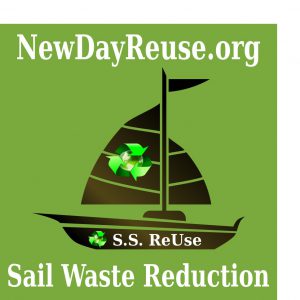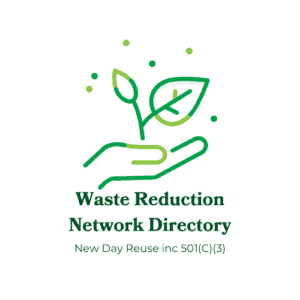Sailboat Sails Recycling & Re purpose

Don’t trash your used sails! If it’s time to replace your stained and shapeless sail, the green choice is Sailboat Sails Recycling. A sail that is still in good condition can be resold and most can be found in the boating section in the local and nation sailing publications, newsletters or buy & sell web sites.
There are other options for a warn out sail made from Dacron. Dacron has physical properties that can have a life beyond being just a sail. Dacron fibers are weaved together to give the sailcloth high strength with minimal stretch. It is translucent, abrasion and UV resistant, doesn’t rot and holds water very well. Even if your sail is in poor condition it’s properties are mostly intact.
Recycled Dacron sailcloth can be cut and made into; sun shades in green houses, natural roof lighting in chicken coups, camper awnings, firewood covers and wind screens. It’s even been made into strong and water resistant “Puddle Jump Bags”.
Sails are incredibly strong, durable and are made to withstand the forces of nature. But they are no longer made of natural materials, man-made Dacron and performance sails are not bio-degradable and if they end up in landfill will probably stay in their current state for many years to come.
This is an unhappy end for a sail that has lived a life of adventure on the ocean wave and an unhappy story for the planet.
Sailboat Sails Recycling is essential!
Why Dacron should be Re-Purposed and not put into the landfills.
Plastic and textile wastes are quickly becoming a global environmental and social issue.
Every year, more than 300 million tons of plastic are produced, as reported by the United Nations. 8 million tons of plastic are dumped into the ocean annually. Less than 10% of all plastic is recycled.
If current trends continue, our oceans could contain more plastic than fish by 2050. And the plastic industry could account for 20% of the world’s total oil consumption.
Raw material sourcing, extraction, and textile fabrication contribute massively to the disastrous environmental impact of fashion. Using synthetic fibers like Dacron harms the ecosystems and the planet.
To create polyester from crude oil, the oil needs to be refined first. Then, it undergoes chemical extraction.
Plastic polymers are created through polymerization. They are them extruded into fibers through spinning before being spun into yarn.
Polyester manufacturing consumes a lot of energy, water, and chemicals. It also releases pollutants and greenhouse gases into the atmosphere and contributes to the global plastic waste and microfiber pollution crisis.
Plastic microfibers into waterways that pollute entire food chains, kill land and marine wildlife and endanger human health.
Synthetic Dacron polyester fabrics are often made from blends of various materials, such as elastane (spandex), nylon, or natural fibers, which makes recycling difficult, not commercially viable, even impossible in some cases.
Polyester isn’t renewable, biodegradable, or compostable. It takes hundreds of years to decompose. And as it breaks down, it releases toxic chemicals and greenhouse gases into the environment.
Links to other organizations & Companies that repurpose or Re Use Sails.
If you would like your organization or company page added to this list free of charge please use the contact us form on our site.

